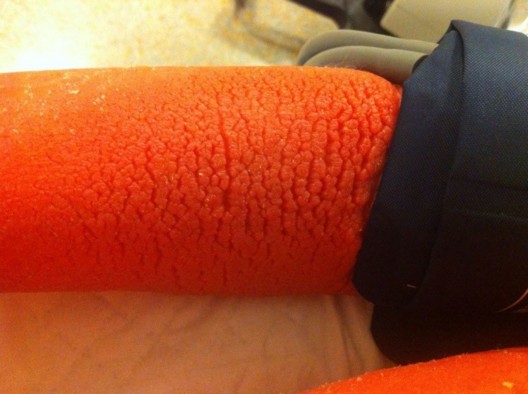Incidence: 1 to 9/106. One of the causes of congenital ichthyosiform erythroderma. Autosomal recessive transmission of a 'loss of function' mutation of the SPINK5 gene (serine protease inhibitor Kazal - type 5) on 5q31-32 , which entails an aberrant expression of the LEKTI protein (lymphoepithelial Kazal-type related inhibitor) that inhibits serine proteases in the keratinocytes and lymphocytes. There is considerable phenotypic variability even in the same family from the neonatal lethal form to mild forms (chronic eczema) diagnosed in childhood.
The classic form contains the triad:
- non-bullous newborn congenital ichthyosiform erythroderma (linear circumflex in childhood): secundary infection (or bacterial colonization) is constant with a risk of systemic infection: important hydroelectrolytic and thermal losses (risk of hypernatremic dehydration)
- hair and (rare and fragile) eyebrows dysplasia: "bamboo" aspect (trichorrhexis invaginata) in polarized light examination
- atopic manifestations: high IgE levels, asthma, alimentary allergies
There is also: growth retardation (constant, following metabolic losses induced by erythroderma); immune depression (inconstant but very severe); sometimes intestinal malabsorption .
Treatment: symptomatic (application of petroleum jelly to protect the affected zones); local application of calcipotriol ?
Experimental treatment: administration of secukinumab or dupilamab: inhibitors of the IL17A or abrocitinib.
Anesthetic implications:
atopic contect; fragile skin (difficulty securing the catheters, eye protection); important thermal and hydroelectrolytic losses; difficult venous access; immune depression: aseptic precautions ! Provide more IV fluids with adapted electrolytes than usual (4,2,1).

References :
- Chabchoub I, Ayadi L, Medjoub I, Maalej B, Kamoun T, Boudawara T, Hachicha M.
Alopécie, ichtyose congénitale et retard de croissance : pensez au syndrome de Netherton !.
Arch Pédiatr 2010 ; 17 : 1725-7. - Benzon H, Thompson J, Nardone H, Ohlms L, McGill T, Holzmann RS.
Anesthetic considerations in Netherton syndrome.
Pediatr Anesth 2012 ; 22 : 410-1. - Luchsinger I, Knopfel N, Theiler M, Bonnet des Claustres M et al.
Secukinumab therapy for Netherton syndrome.
JAMA Dermatology 2020 ; 156 : 907-11 - Lillemoen Drivenes J, Bygum A.
Netherton Syndrome.
JAMA Dermatology 2022 ; 158 :1315
Updated: December 2022